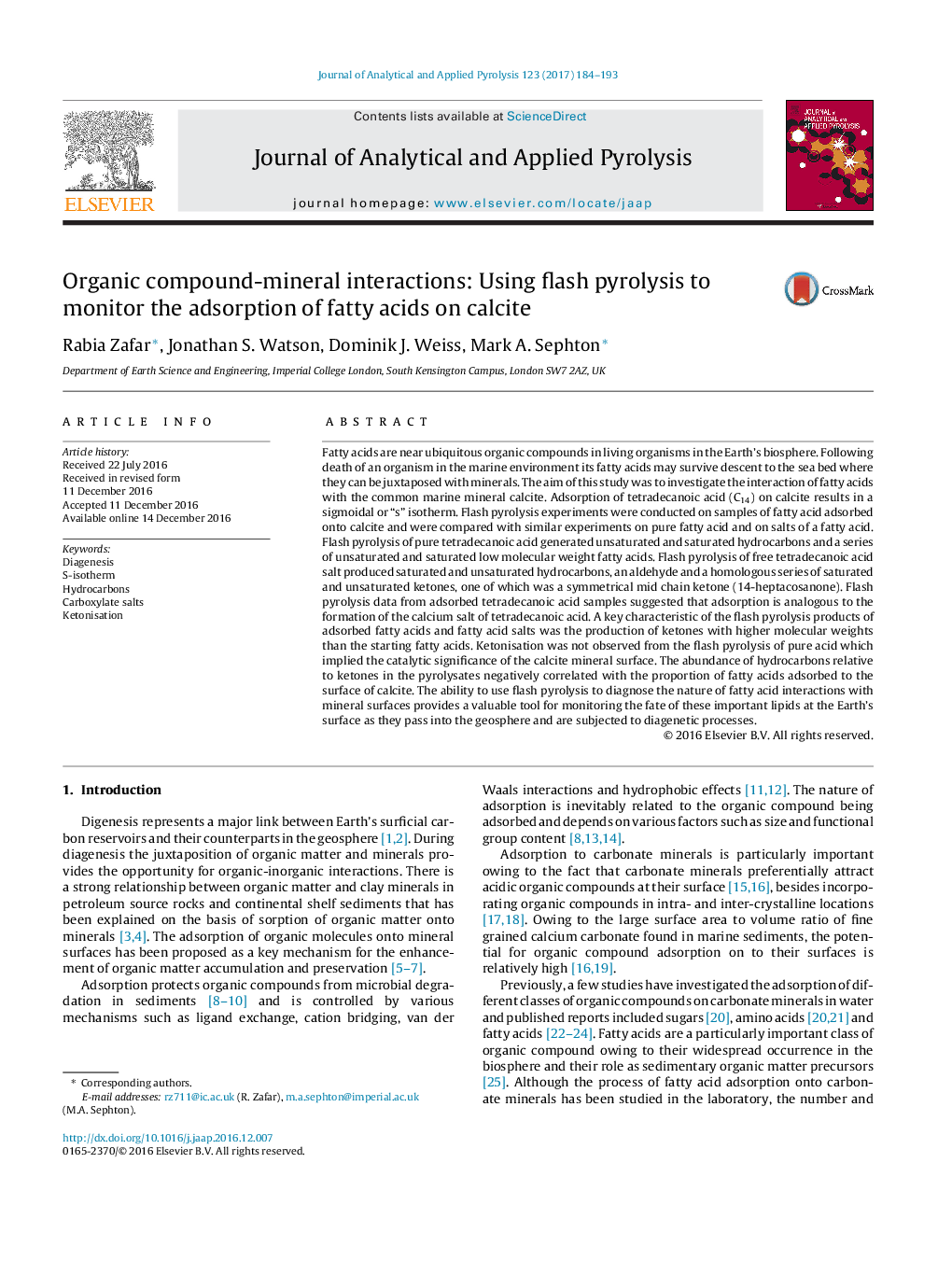| کد مقاله | کد نشریه | سال انتشار | مقاله انگلیسی | نسخه تمام متن |
|---|---|---|---|---|
| 5134537 | 1492954 | 2017 | 10 صفحه PDF | دانلود رایگان |

- Adsorption of tetradecanoic acid (C14) on calcite results in a sigmoidal isotherm.
- Flash pyrolysates from tetradecanoic acid in free and adsorbed states are distinct.
- Flash pyrolysates from tetradecanoic acid free compounds and salts are similar.
- Flash pyrolysis can monitor the passage of biomass fatty acids into the geosphere.
Fatty acids are near ubiquitous organic compounds in living organisms in the Earth's biosphere. Following death of an organism in the marine environment its fatty acids may survive descent to the sea bed where they can be juxtaposed with minerals. The aim of this study was to investigate the interaction of fatty acids with the common marine mineral calcite. Adsorption of tetradecanoic acid (C14) on calcite results in a sigmoidal or “s” isotherm. Flash pyrolysis experiments were conducted on samples of fatty acid adsorbed onto calcite and were compared with similar experiments on pure fatty acid and on salts of a fatty acid. Flash pyrolysis of pure tetradecanoic acid generated unsaturated and saturated hydrocarbons and a series of unsaturated and saturated low molecular weight fatty acids. Flash pyrolysis of free tetradecanoic acid salt produced saturated and unsaturated hydrocarbons, an aldehyde and a homologous series of saturated and unsaturated ketones, one of which was a symmetrical mid chain ketone (14-heptacosanone). Flash pyrolysis data from adsorbed tetradecanoic acid samples suggested that adsorption is analogous to the formation of the calcium salt of tetradecanoic acid. A key characteristic of the flash pyrolysis products of adsorbed fatty acids and fatty acid salts was the production of ketones with higher molecular weights than the starting fatty acids. Ketonisation was not observed from the flash pyrolysis of pure acid which implied the catalytic significance of the calcite mineral surface. The abundance of hydrocarbons relative to ketones in the pyrolysates negatively correlated with the proportion of fatty acids adsorbed to the surface of calcite. The ability to use flash pyrolysis to diagnose the nature of fatty acid interactions with mineral surfaces provides a valuable tool for monitoring the fate of these important lipids at the Earth's surface as they pass into the geosphere and are subjected to diagenetic processes.
Journal: Journal of Analytical and Applied Pyrolysis - Volume 123, January 2017, Pages 184-193